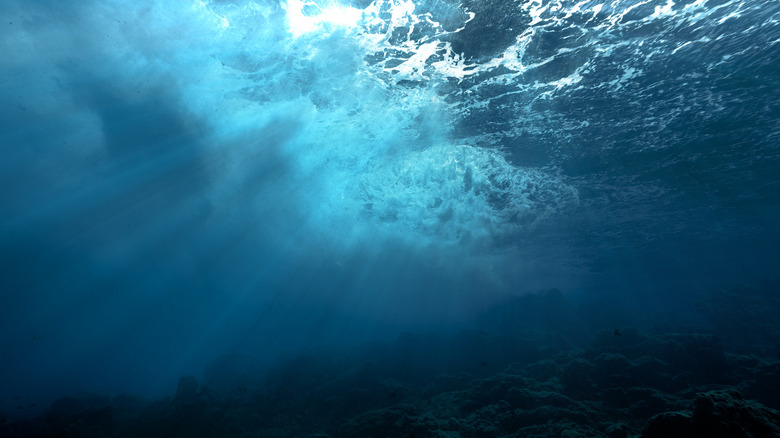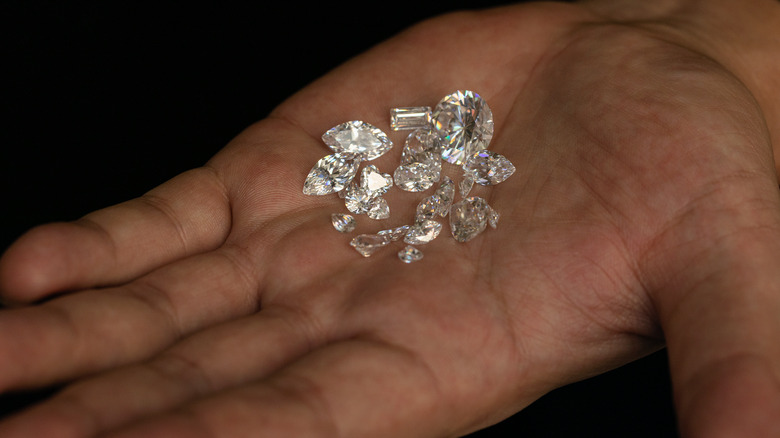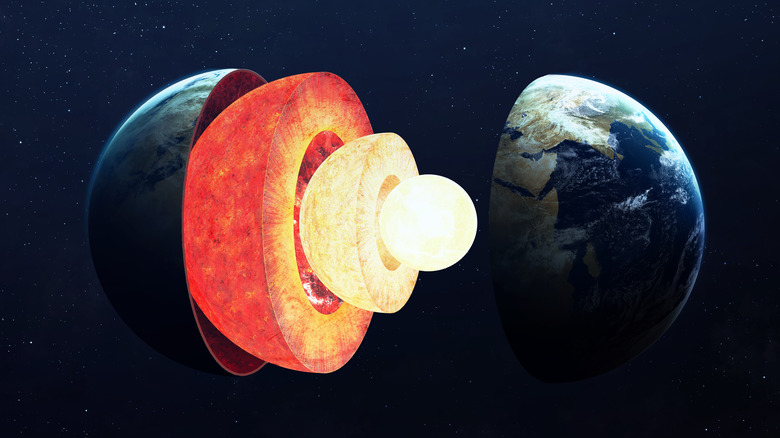Earth Could Have More Oceans Than You Think
Big, deep, and fascinating, people have always been intrigued by the mysteries of the ocean. And though the commonly held belief that we know more about space than we do our oceans is not quite so simple, there is a kernel of truth to it. As How Stuff Works explains, there is a lot about the ocean that people do not know.
One of the barriers limiting ocean exploration is technological. According to the Columbia Climate School, light- and radio-based technology used for surveying the moon might not work for the ocean because electromagnetic waves don't particularly like water. Unlike space, electromagnetic waves have difficulty transmitting through water. While there's been success using acoustics-based technology to map the bottom of the ocean, there's still far too much science doesn't know about the deep.
And if that sounded pretty heavy, there's even bigger news that might shock a lot of people: There may actually be more oceans than people think. And they could be buried deep within the Earth's mantle.
Diamonds found in the Earth might be evidence of hidden oceans
Most people are probably familiar with the four oceans of the world: the Pacific, the Indian, the Atlantic, and the Arctic. According to the National Oceanic and Atmospheric Administration, a fifth ocean, the Southern, was recognized by many countries back in 2000. Despite that, the study of oceans is still an enigmatic discipline. But there is one mystery scientists are trying to solve: how oceans might have formed in the Earth's mantle.
As Northwestern University mineralogist Steve Jacobsen told Quanta Magazine, his goal is to figure out where hidden oceans are and how they came to be. Diamonds found in Brazil just might contain the holy grail of clues for hidden oceans. The diamonds, now housed at Northwestern's mineralogist department, contained signs of oxygen and hydrogen atoms, which could be a sign of oceans hundreds of miles below the earth. The gems and rocks don't contain water as we think of it, but more so disembodied atoms of water: hydrogen and oxygen atoms. However, water comes out when these materials are melted down.
So where is all of this water coming from? How much water could there be within the Earth? For that, one has to look at the Earth's mantle itself. Surprisingly, the oceans of the Earth could pale in comparison to what the mantle itself holds.
Earth's mantle may hold more water than every ocean combined
The Earth's structure is simple yet intricate — made up of a few layers, mineral composites, and tectonic plates. One can think of the Earth like an apple or kiwi in terms of how it is layered. There's the crust, which is where all humans reside, the mantle, the outer core, and finally, the inner core (via National Geographic). The mantle itself is further divided into the upper mantle and lower mantle. Hidden oceans may lurk somewhere in between these two.
Mineralogists think that there might be a watery transition zone in between the upper and lower mantles, which contain minerals like wadsleyite and ringwoodite. According to Quanta Magazine, water-bearing minerals from the mantle might throw off everything scientists know about how the Earth was formed. It's too early to determine the extent of such findings, but it does challenge preconceived notions of Earth's structure.
The Earth's mantle is naturally a place with high heat and a lot of pressure. These conditions just so happen to also be prime for diamond formation. As Geology states, most of the Earth's diamond deposits might have initially formed in the mantle and risen to the crust over time. As those diamonds are formed, they also capture minerals, which might contain signs of hidden oceans trapped within their glassy bodies. Only time will tell where the research will go, but the future is very promising.


